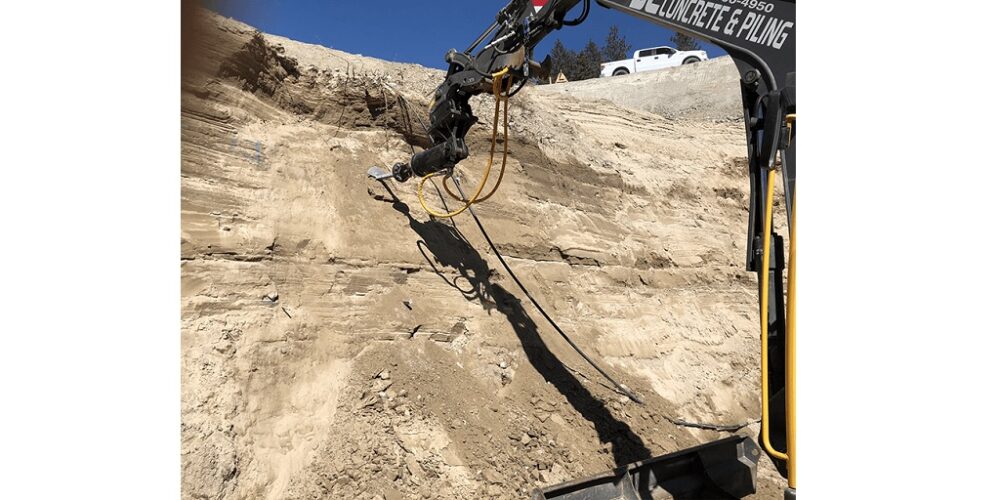When it comes to building structures that stand the test of time, the foundation plays a critical role. It’s the anchor that keeps everything stable and secure. In the world of foundation construction, there’s a versatile and robust solution known as micropiles. These small-diameter piles have made a significant impact in the construction industry, particularly in regions like British Columbia, where challenging soil and site conditions often pose a unique set of challenges.
Understanding Micropiles
Micropiles are small-diameter piles, typically ranging from 2.5 inches to 12 inches in diameter. They are designed to extend to impressive depths of up to 200 feet and are capable of bearing working loads of over 400 tons. What sets micropiles apart is their incredible adaptability and efficiency in transferring loads to competent soil or rock layers.
The construction of a micropile involves drilling and grouting a small-diameter hole and reinforcing it with a high-strength threaded bar. These elements work together to ensure the pile’s stability and load-bearing capacity. Micropiles can be further enhanced by installing permanent steel casing, which not only provides added strength but also boosts lateral capacity. This feature makes them an ideal choice for projects with specific engineering requirements.
Advantages of Micropiles
Micropiles offer a plethora of benefits that have revolutionized foundation construction. Let’s delve into some of the key advantages:
High Load Capacity: Micropiles are true powerhouses, capable of bearing working loads of over 400 tons in both tension and compression. Their impressive load-bearing capacity makes them suitable for a wide range of applications.
Excellent Penetration: These small-diameter wonders can be easily socketed into hard rock and can even navigate through subsurface obstructions and boulders encountered during installation. This adaptability ensures that micropiles can be effectively used in diverse geological conditions.
Less Disturbance: Micropile installation generates minimal vibrations, which is a significant advantage when working in close proximity to existing structures. This feature makes them a preferred choice for projects in urban environments or near sensitive areas.
Suited to Sites with Limited Access: Micropiles shine in projects with tight clearances or interior drilling needs. They are incredibly versatile and adaptable, making them indispensable for underpinning or retrofitting existing structures.
Installation in Low Headroom Sites: The flexibility of micropiles extends to their installation process. Pile length can be segmented by installing shorter bar lengths that are coupled together. This feature is particularly beneficial when working in confined spaces with limited headroom.
Adaptable to Difficult Soil Conditions: Micropiles can tackle elevated groundwater levels and challenging soil conditions. They are engineered to provide stability and support even when faced with less-than-ideal geological scenarios.
Applications of Micropiles
The versatility of micropiles is truly remarkable, and their applications are wide-ranging. Here are some common uses:
Structural Support: Micropiles are often employed to provide crucial structural support for a variety of projects, from bridges to buildings. Their high load-bearing capacity ensures the stability and longevity of the structure.
Underpinning Foundations: When existing foundations require reinforcement or repair, micropiles are an ideal solution. Their unobtrusive installation and impressive load-bearing capabilities make them a go-to choice for underpinning projects.
Enhancing Mass Stability: Projects in areas prone to landslides or other mass stability issues benefit from the use of micropiles. These piles provide crucial reinforcement to prevent slope failures and ensure safety.
Load Transfer: Micropiles are key components in load transfer systems, facilitating the safe and efficient transfer of loads in construction and geotechnical engineering.
Seismic Upgrading Applications: Micropiles play a vital role in seismic retrofitting. They reinforce structures, making them more resilient in the face of seismic events, which is particularly important in regions with seismic activity like British Columbia.
Atlas Piling: Your Trusted Partner in Piling Services, British Columbia
If you’re considering utilizing micropiles for your construction or foundation project in British Columbia, Atlas Piling is your trusted partner. With extensive experience and expertise in piling services, Atlas Piling is equipped to assist you with precision and professionalism. Contact them today to learn more about piling services and how they can assist you in achieving your construction goals.












